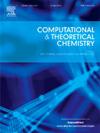Reactive molecular dynamics simulation of the carbendazim degradation induced by reactive oxygen plasma species
IF 3
3区 化学
Q3 CHEMISTRY, PHYSICAL
引用次数: 0
Abstract
Carbendazim (CBZ), a systemic benzimidazole carbamate fungicide, used in agriculture, forestry, and veterinary practices to combat fungal diseases, is notably classified as a hazardous chemical by the World Health Organization. Cold Atmospheric Plasma (CAP) has demonstrated successful pesticide degradation with notable removal rates, energy efficiency, and eco-friendly attributes. In the present work, we employed RMD simulations to investigate how reactive oxygen species (ROS) induce degradation pathways in CBZ. Our simulations demonstrate that ROS, including O atoms, OH radicals, and O3 molecules, play a pivotal role in initiating modifications. Typically, the interaction between ROS and pesticides begins with H-abstraction, leading to the disruption and formation of key chemical bonds such as C![]() C, C
C, C![]() N, and C
N, and C![]() O bonds, while facilitating the formation of C
O bonds, while facilitating the formation of C![]() C, C
C, C![]() O, and C
O, and C![]() O bonds. Moreover, we examined the dose-dependent effects of ROS on CBZ by incrementally increasing ROS quantities within the simulation environment. As ROS concentration increases, the degree of pesticide damage also increases. The elucidated chemical pathways and statistical data provide insights into the atomic-scale degradation mechanism of CBZ, offering a theoretical foundation for optimizing pesticide degradation strategies in future applications.
O bonds. Moreover, we examined the dose-dependent effects of ROS on CBZ by incrementally increasing ROS quantities within the simulation environment. As ROS concentration increases, the degree of pesticide damage also increases. The elucidated chemical pathways and statistical data provide insights into the atomic-scale degradation mechanism of CBZ, offering a theoretical foundation for optimizing pesticide degradation strategies in future applications.

求助全文
约1分钟内获得全文
求助全文
来源期刊

Computational and Theoretical Chemistry
CHEMISTRY, PHYSICAL-
CiteScore
4.20
自引率
10.70%
发文量
331
审稿时长
31 days
期刊介绍:
Computational and Theoretical Chemistry publishes high quality, original reports of significance in computational and theoretical chemistry including those that deal with problems of structure, properties, energetics, weak interactions, reaction mechanisms, catalysis, and reaction rates involving atoms, molecules, clusters, surfaces, and bulk matter.
 求助内容:
求助内容: 应助结果提醒方式:
应助结果提醒方式:


